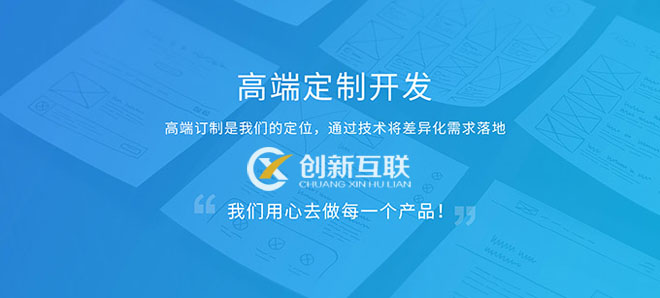手写简易前端框架:Function和Class组件
jsx 不是直接编译成 vdom 的,而是生成 render function,执行之后产生 vdom。

专注于为中小企业提供网站建设、网站制作服务,电脑端+手机端+微信端的三站合一,更高效的管理,为中小企业宁德免费做网站提供优质的服务。我们立足成都,凝聚了一批互联网行业人才,有力地推动了千余家企业的稳健成长,帮助中小企业通过网站建设实现规模扩充和转变。
中间多加了一层 render function,可以执行一些动态逻辑。别小看这一层 render function,它恰恰是实现组件的原理。
实现组件渲染
支持了 jsx 后,可以执行一些动态逻辑,比如循环、比如从上下文中取值:
const list = ['aaa', 'bbb'];
const jsx =
- {item} )
{
list.map(item =>
}
render(jsx, document.getElementById('root'));
这个封装成函数,然后传入参数不就是组件么?
我们在 render 函数里处理下函数组件的渲染:
if (isComponentVdom(vdom)) {
const props = Object.assign({}, vdom.props, {
children: vdom.children
});
const componentVdom = vdom.type(props);
return render(componentVdom, parent);
}如果是 vdom 是一个组件,那么就创建 props 作为参数传入(props 要加上 children),执行该函数组件,拿到返回的 vdom 再渲染。
判断组件就是根据 type 是否为 function:
function isComponentVdom(vdom) {
return typeof vdom.type == 'function';
}
就这几行代码,我们就实现了函数组件。
测试下效果,声明两个函数组件,传入 props:
function Item(props) {
return }
function List(props) {
return
- alert(item.text)}>{item.text}
{props.list.map((item, index) => {
return
})}
}
const list = [
{
text: 'aaa',
color: 'blue'
},
{
text: 'ccc',
color: 'orange'
},
{
text: 'ddd',
color: 'red'
}
]
render(
- , document.getElementById('root'));
- alert(item.text)}>{item.text}
- 封装成函数,传入 props,就是函数组件
- 封装成 class,传入 props,设置 state 属性,就是 class 组件
在浏览器跑一下:
我们实现了函数组件!
是不是非常简单!它其实就是在 jsx 的基础上封装成了函数,然后传入参数而已。
然后再实现下 class 组件:
class 组件需要声明一个类,有 state 的属性:
class Component {
constructor(props) {
this.props = props || {};
this.state = null;
}
setState(nextState) {
this.state = nextState;
}
}然后渲染 vdom 的时候,如果是类组件,单独处理下:
if (isComponentVdom(vdom)) {
const props = Object.assign({}, vdom.props, {
children: vdom.children
});
if (Component.isPrototypeOf(vdom.type)) {
const instance = new vdom.type(props);
const componentVdom = instance.render();
instance.dom = render(componentVdom, parent);
return instance.dom;
} else {
const componentVdom = vdom.type(props);
return render(componentVdom, parent);
}
}判断如果 vdom 是 Component,就传入 props 创建实例,然后调用 render 拿到 vdom 再渲染。
还可以加上渲染前后的生命周期函数:
const instance = new vdom.type(props);
instance.componentWillMount();
const componentVdom = instance.render();
instance.dom = render(componentVdom, parent);
instance.componentDidMount();
return instance.dom;
这样就实现了 class 组件。
我们测试下,声明一个 class 组件,传入 props,设置 state:
function Item(props) {
return }
class List extends Component {
constructor(props) {
super();
this.state = {
list: [
{
text: 'aaa',
color: 'blue'
},
{
text: 'bbb',
color: 'orange'
},
{
text: 'ccc',
color: 'red'
}
],
textColor: props.textColor
}
}
render() {
return
{this.state.list.map((item, index) => {
return
})}
}
}
render(
- , document.getElementById('root'));
浏览器跑一下:
class 组件渲染成功!
就这样,我们实现了 class 组件,支持了 props 和 state。
代码上传到了 github:https://github.com/QuarkGluonPlasma/frontend-framework-exercize
总结
上篇文章我们支持了 jsx,它编译产生 render function,执行之后可以拿到 vdom,然后再渲染。
多了这层 render function 之后,它可以执行很多动态逻辑,比如条件判断、循环,从上下文取值等。
对这些逻辑封装一下就是组件了:
「组件本质上是对 vdom 的动态渲染逻辑的封装,class 和 function 是两种封装形式」。
实现了 vdom 的渲染之后,支持组件的两种封装形式是非常简单的事情。
至此,我们支持了 vdom 渲染、jsx 编译、class 和 function 组件,渲染部分基本差不多了,下篇文章我们来实现渲染之后的更新,也就是 patch 的功能。
当前标题:手写简易前端框架:Function和Class组件
文章源于:http://www.mswzjz.com/qtweb/news32/209932.html
网站建设、网络推广公司-创新互联,是专注品牌与效果的网站制作,网络营销seo公司;服务项目有等
声明:本网站发布的内容(图片、视频和文字)以用户投稿、用户转载内容为主,如果涉及侵权请尽快告知,我们将会在第一时间删除。文章观点不代表本网站立场,如需处理请联系客服。电话:028-86922220;邮箱:631063699@qq.com。内容未经允许不得转载,或转载时需注明来源: 创新互联
- 学会Linux下执行二进制文件的方法,让您工作更高效(linux执行二进制文件)
- ksweb宝塔
- jdk1.4配置环境变量win7?javawindows7
- .technology域名是什么?
- 查询Linux系统版本:七步曲(如何查询linux的版本)
- Redis有多少场景适用(redis适合写多少画面)
- 创新互联VUE2教程:Vue.js2.0过渡状态
- 企业面对混合云计算部署要做什么准备?(混合云部署模式下的企业云)
- 长见识,让大家看看什么是垃圾代码
- Ubuntu中安装VisualStudioCode具体方法
- 云计算是一个比较超前的概念
- 老笔记本卡慢换什么硬件
- 高防服务器与普通服务器的差异分析
- Linux终极指南:所有命令汇总(linux所有命令)
- 网站域名如何公安备案?(网站公安备案怎么看信息)